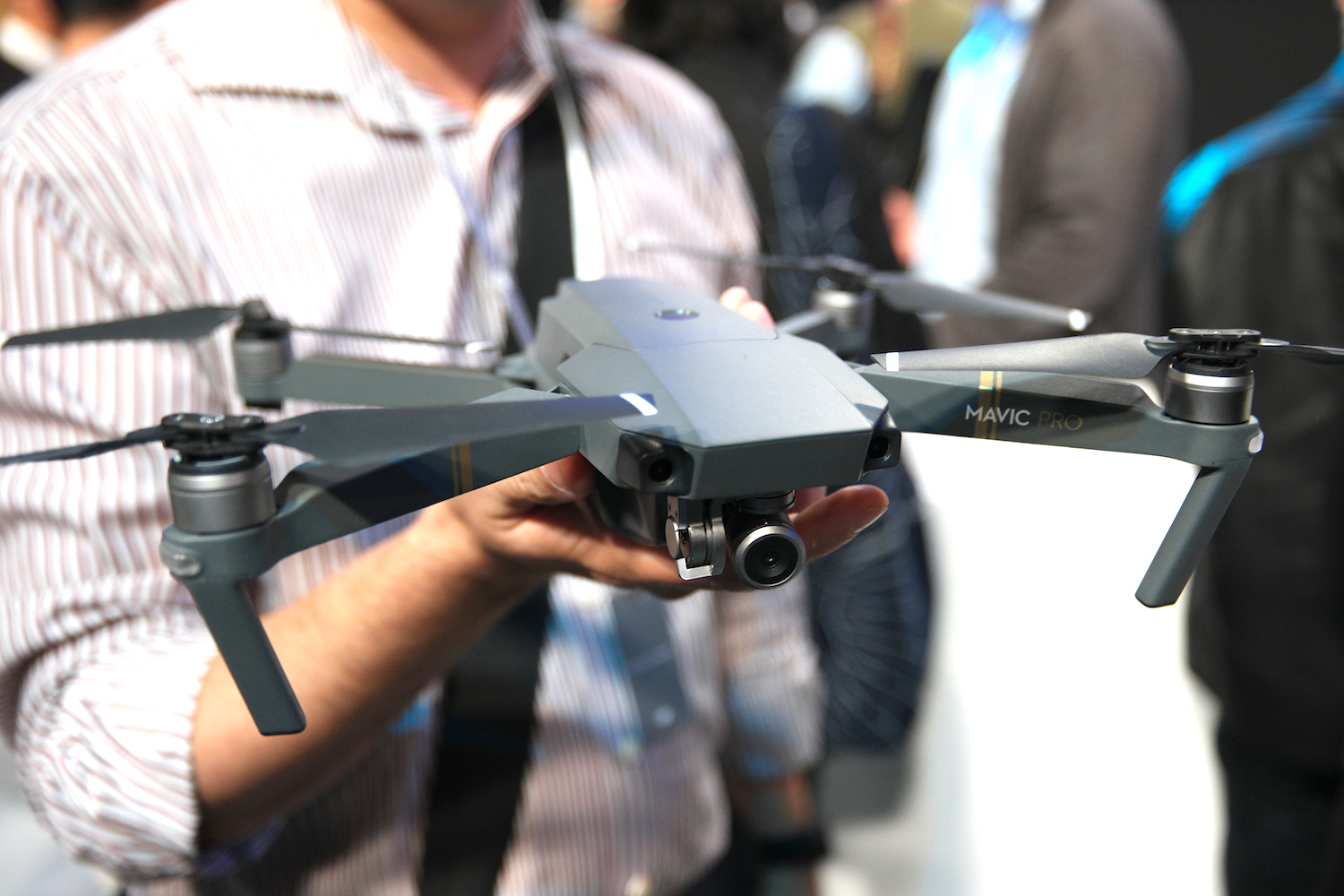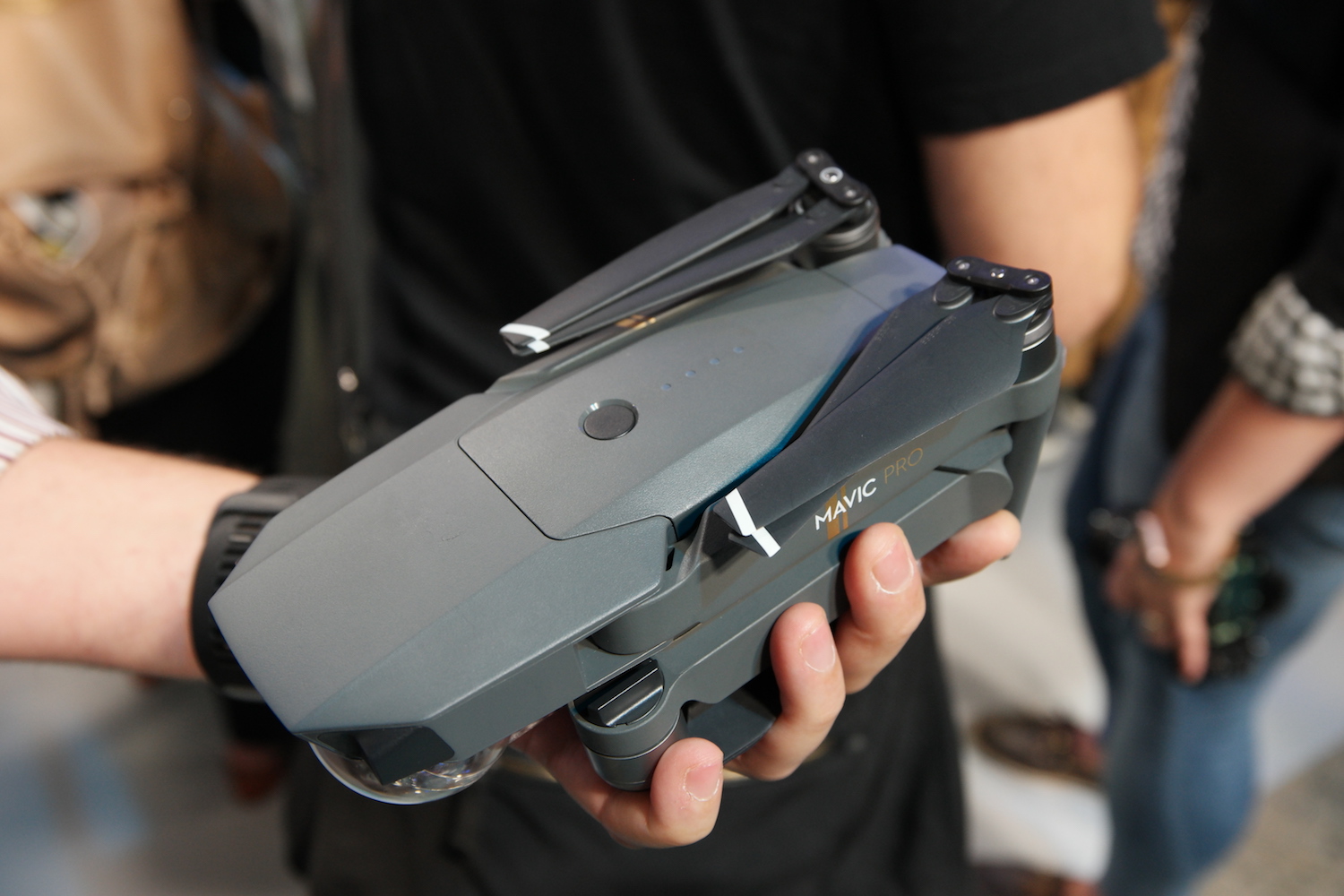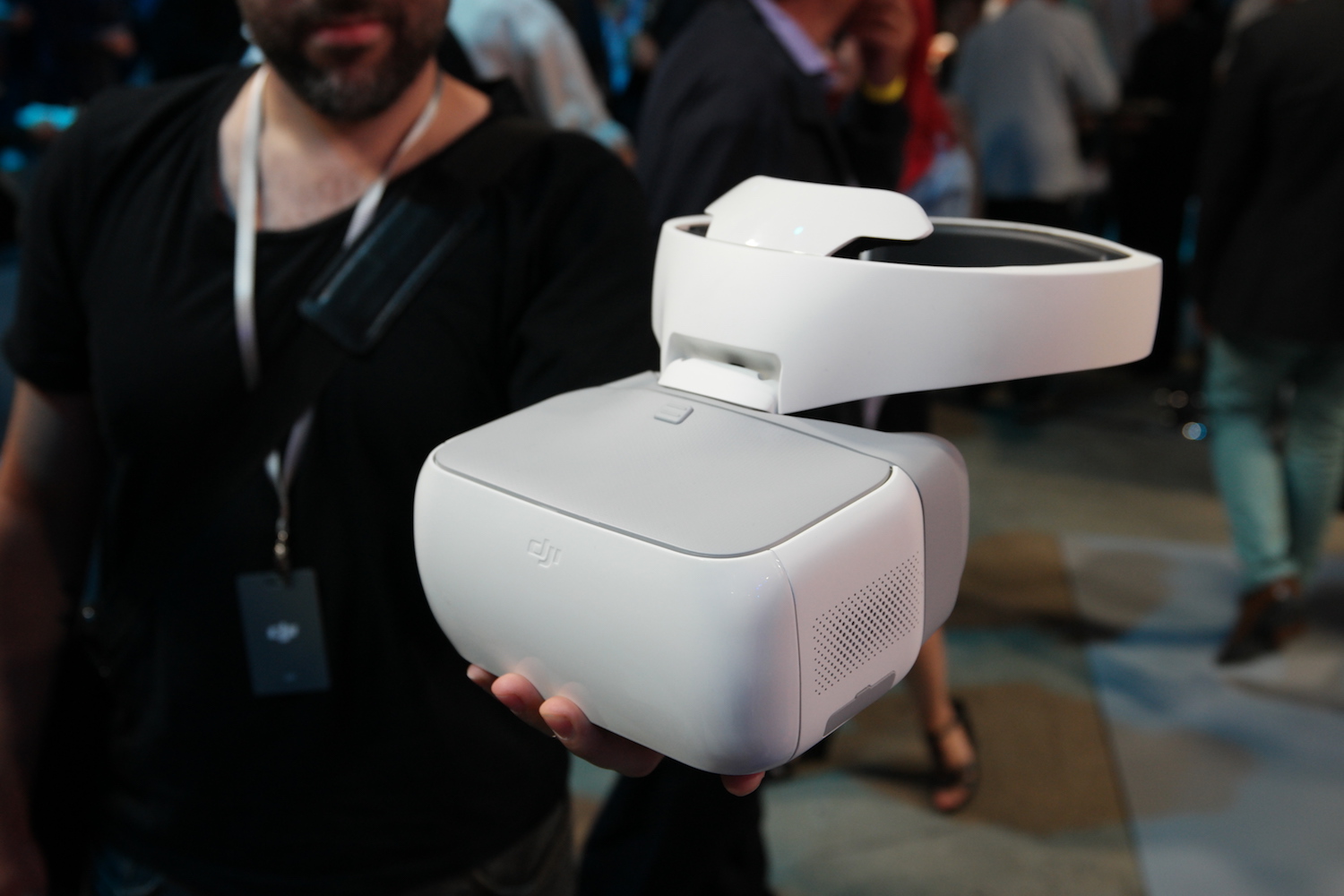You Can Control DJI's New Drone By Waving Your Hands
DJI's new Mavic Pro drone can fit in your pocket, has a 4K camera, and has built-in gesture controls.
Look out, GoPro. DJI is looking to keep its drones flying higher than the competition with its newest model, the Mavic Pro. This tiny drone fits in the palm of your hand, but includes a gimbal-mounted 4K camera, up to 27 minutes of flight time, 5 cameras to monitor its position, and comes with gesture controls, letting you control the Mavic Pro just by waving your hands. The Mavic Pro is available for preorder today, and will be available mid-October starting at $749.
The Mavic Pro is about 1/3 the size of a piece of paper (7.8 x 3.4 x 3.4 inches folded), weighs 1.6 pounds, and is about as tall as a bottle of water. Its four rotor arms retract for transportation, as do its four landing legs. Its camera, mounted on a 3-axis stabilizer, has a 12-MP sensor (1/2-3 CMOS, f/2.2), can shoot 4K video at up to 30 fps, as well as Adobe DNG RAW still images.

In person, it's impressive just how compact the Mavic Pro is; Its size will make it well suited for those who want to take a drone, say, backpacking or skiing, and don't want to carry around a bulky case. Its four arms fold securely against the body, and its rotors also fold flush against the frame. Smartly, DJI also includes a clear plastic protective cover for the camera, to keep it from getting damaged while in your bag.

MORE: The Best Drones and Quadcopters on Any Budget
The Mavic Pro also comes with a remote control that's not much larger than something you'd get with a Playstation or XBox. Like the drone itself, the controller's antennas extend, along with two arms that hold a smartphone, for you to get a live view from the drone's camera. Using Wi-Fi, the controller can stream a 1080p signal from up to 7 kilometers away. The controller has a nice, solid feel, and little rubber grips kept an iPhone from falling out. In addition to the joysticks, there are several buttons on the front of the controller that let you start and stop recordings, as well as adjust the camera angle.

Gesture controls let you tell the Mavic to track you just by waving your hands in the air. Other gestures include the ability to take a picture by making a square with your fingers.
When launching, the Mavic Pro takes a photo of its surroundings, so that on its return to base, it can land within centimeters of where it took off. A terrain following system lets the drone stay a fixed level above the ground for when it's tracking you and you're climbing up or down a mountain.
Get instant access to breaking news, the hottest reviews, great deals and helpful tips.
Other tracking modes include circle mode, tripod mode (which decreases its speed, so you can get a more precise photo), and Spotlight, which keeps a subject center in the shots. Sports mode lets you dial up the Mavic Pro's speed to 40.6 miles per hour.
DJI is also introducing a set of goggles, which gives you a first-person look at what the Mavic is seeing. The goggles, which look like a bulkier version of the Samsung Gear VR, feature two 1080p displays with an 85-degree field of view. Plus, you can also bind two goggles to a single drone, so that a friend can also watch the feed from the drone as you pilot it.

For $749, you get the drone itself. With the remote, it will cost $999. A package with a carrying case, two batteries and a car charger will cost $1,299. DJI has yet to release pricing or availability for the headset, but we will update this post once we get more information.
The Mavic Pro is a very interesting addition to DJI's squadron of camera drones. It will undoubtedly be in a dogfight with the comparably priced GoPro Karma, which features a removable gimbal which you can use apart from the drone itself, but which requires you to purchase a camera separately. We can't wait to test both, to see which one aces the other.

Michael A. Prospero is the U.S. Editor-in-Chief for Tom’s Guide. He oversees all evergreen content and oversees the Homes, Smart Home, and Fitness/Wearables categories for the site. In his spare time, he also tests out the latest drones, electric scooters, and smart home gadgets, such as video doorbells. Before his tenure at Tom's Guide, he was the Reviews Editor for Laptop Magazine, a reporter at Fast Company, the Times of Trenton, and, many eons back, an intern at George magazine. He received his undergraduate degree from Boston College, where he worked on the campus newspaper The Heights, and then attended the Columbia University school of Journalism. When he’s not testing out the latest running watch, electric scooter, or skiing or training for a marathon, he’s probably using the latest sous vide machine, smoker, or pizza oven, to the delight — or chagrin — of his family.
